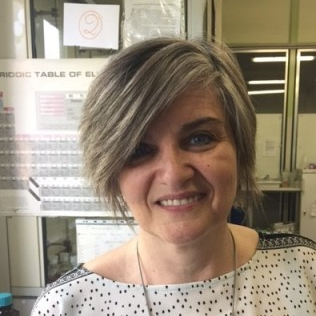Tissue-Protective Agents: New Drugs and Technologies
A special issue of Pharmaceuticals (ISSN 1424-8247).
Deadline for manuscript submissions: closed (31 December 2017) | Viewed by 52603
Special Issue Editors
Interests: rational drug design, synthesis and structure–activity relationships of biologically active compounds (small molecules and peptides); preparation and characterization of chiral compounds; discovery of new modulators of sigma receptors as well as of small molecules able to affect the protein kinase C (PKC)/ELAV proteins/mRNA system
Special Issues, Collections and Topics in MDPI journals
Interests: rheology and viscosimetry; mucoadhesion; in situ gelling polymers; micro- and nanoparticulate systems; statistical optimization techniques; wound dressings, nervous tissue repair
Special Issues, Collections and Topics in MDPI journals
Special Issue Information
Dear Colleagues,
Tissue-regeneration is one of the most important challenges in the biomedical field. The recovery of damaged tissue is essential for slowing and reverting the progression of lesions and for restoring tissue functions, particularly when the damage is caused by severe traumatic events, by aging, or age-associated degenerative diseases. The classical approach based on drug treatment, traditionally aimed to specific target proteins, has been recently combined with cell therapy and with the use of technological platforms able to play an active role in repairing/regeneration mechanisms. This could provide important advancements in developing alternative, complementary and more efficacious treatments. Such a goal can be achieved by integrating several disciplines, i.e., medicinal chemistry, pharmaceutical technology, pharmacology and engineering.
This Special Issue intends to summarize the current state-of-the-art in this field; the proposed topics include, but are not limited to:
- new potential drugs able to promote tissue repair/regeneration
- analytical strategies for bioactive compound identification and quantification
- bioactive therapeutic platforms able to load the actives, maintaining their therapeutic properties and enhancing their efficacy
- polymeric scaffolds able to support cell proliferation and migration
- cell therapy approach
- in vitro/ex vivo techniques for the investigation of active mechanisms
- in vivo preclinical and clinical studies to prove treatment efficacy
To celebrate the advances in this important field, the Pharmaceuticals journal invites fellow scientists to submit original papers or reviews, which will be published as a Special Issue.
Prof. Dr. Simona Collina
Prof. Dr. Silvia Rossi
Guest Editors
Manuscript Submission Information
Manuscripts should be submitted online at www.mdpi.com by registering and logging in to this website. Once you are registered, click here to go to the submission form. Manuscripts can be submitted until the deadline. All submissions that pass pre-check are peer-reviewed. Accepted papers will be published continuously in the journal (as soon as accepted) and will be listed together on the special issue website. Research articles, review articles as well as short communications are invited. For planned papers, a title and short abstract (about 100 words) can be sent to the Editorial Office for announcement on this website.
Submitted manuscripts should not have been published previously, nor be under consideration for publication elsewhere (except conference proceedings papers). All manuscripts are thoroughly refereed through a single-blind peer-review process. A guide for authors and other relevant information for submission of manuscripts is available on the Instructions for Authors page. Pharmaceuticals is an international peer-reviewed open access monthly journal published by MDPI.
Please visit the Instructions for Authors page before submitting a manuscript. The Article Processing Charge (APC) for publication in this open access journal is 2900 CHF (Swiss Francs). Submitted papers should be well formatted and use good English. Authors may use MDPI's English editing service prior to publication or during author revisions.
Benefits of Publishing in a Special Issue
- Ease of navigation: Grouping papers by topic helps scholars navigate broad scope journals more efficiently.
- Greater discoverability: Special Issues support the reach and impact of scientific research. Articles in Special Issues are more discoverable and cited more frequently.
- Expansion of research network: Special Issues facilitate connections among authors, fostering scientific collaborations.
- External promotion: Articles in Special Issues are often promoted through the journal's social media, increasing their visibility.
- e-Book format: Special Issues with more than 10 articles can be published as dedicated e-books, ensuring wide and rapid dissemination.
Further information on MDPI's Special Issue polices can be found here.







